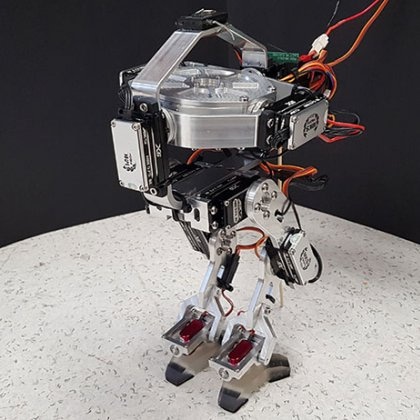Jan 17 2019
With the creation of an innovative system to bring a highly affordable option to the market, in due course, walking robots could be used in search and rescue missions or even to deliver groceries.
 Walking robots are set to be much more affordable. (Image credit: The University of Queensland)
Walking robots are set to be much more affordable. (Image credit: The University of Queensland)
Pauline Pounds, Associate Professor at the University of Queensland, has investigated the possibilities of developing a simplified model for rendering bipedal robots more accessible and inexpensive.
I always wanted to build the amazing walking machines you see in science fiction and I always wondered why they were so hard to build. Walking in robots is very complex, and a lot of research and funding has gone into dealing with this complexity. Famous walking robots such as those developed at Boston Dynamics, Schaft and Honda are expected to have price tags in excess of one million dollars. Our approach promises to reduce the cost to only a few thousand dollars.
Dr Pauline Pounds, Associate Professor, University of Queensland
Control moment gyroscopes have been incorporated into her system to retain the robot upright, irrespective of where its feet are placed, thereby enabling the use of more affordable actuators and sensors.
“We are starting by building very small chicken-sized robots to prove the underlying science and solve engineering problems, before moving up to larger human-sized platforms that can carry useful payloads, like your weekly shopping.”
“From there, we could size the robot up or down to suit the particular application and need—from something the size of a rat, up to a human piloted machine as big as a mining haul truck.”
According to Dr Pounds, although there exist complex walking machines, they usually have limited applications and are very costly.
A large fraction of their cost comes in providing capabilities beyond simple walking, such as off-road terrain handling. However, there are many applications that could use walking machines—such a grocery delivery, compound security and human mobility—that only need to deal with simpler terrain.
Dr Pauline Pounds, Associate Professor, University of Queensland
The research paper from Dr Pounds, titled “Towards the Tiny Giant Robot—A Low-Cost Gyroscopically Stabilised Biped,” was awarded as the best paper at the Australasian Conference on Robotics and Automation.
In three years, this is the second time the lab has bagged the top prize, outshining more than a dozen other Australian institutions.
EAIT Robot footage
EAIT Robot footage from The University of Queensland on Vimeo. The robot balances itself. (Video credit: The University of Queensland)